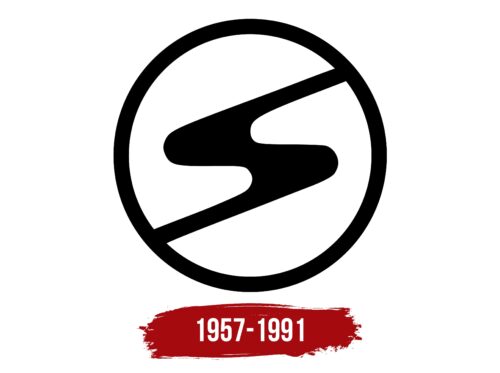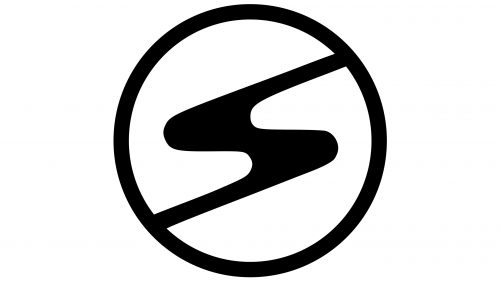The Trabant logo is a professional symbol of an automobile manufacturing company. It clearly demonstrates its specialization, allowing consumers to understand the type of products the manufacturer offers immediately.
Trabant: Brand overview
The first Trabant prototype was unveiled at the VEB Sachsenring Automobilwerke Zwickau facility in East Germany (GDR) in 1957, marking the beginning of the car’s history. As an allusion to the Soviet space satellite launched in the same year, the word “Trabant” means “satellite” in German.
The need to provide the people of the GDR with affordable people’s cars propelled the development of the vehicle. Engineers had to develop creative solutions because of the planned economy and resource limitations.
1958 saw the start of the P50’s mass manufacturing. This vehicle had a 500 cc, two-stroke engine that produced 18 horsepower. The car was unique because its body was composed of Duroplast, a composite material derived from cotton and phenolic resins. The GDR’s lack of steel led to this material selection.
The manufacturer saw advancements in development in the 1960s. The more potent 600 cc engine of the 600 variant was unveiled in 1962. Additionally, the braking and suspension systems on this model were updated.
With its 1964 debut, the 601 emerged as the most identifiable and widely produced model. Until 1990, the 601 was manufactured almost unchanged and came to represent the GDR’s car industry. For this model, more than 2.8 million units were made.
Almost no modifications were made to the vehicle during its production in the 1970s and 1980s. The car continued to be the primary reasonably priced car for GDR people despite its increasing technology lag behind Western automobiles. During this period, lengthy waiting lists to buy one became a symbol of the East German economy.
Attempts to upgrade the model were made in the 1980s. Modern designs and four-stroke engine prototypes were produced, but these projects never got off the ground because of the GDR’s economic problems.
The fall of the Berlin Wall in 1989 and the reunification of Germany in 1990 were historical turning points for the brand. Suddenly, more contemporary Western models were offered on the open market, making it less competitive.
Production of the 1.1, a four-stroke engine from the Volkswagen Polo, started in 1990 to adjust to the changing circumstances. Nevertheless, this model could not reverse the situation, and 34 years of production ended on April 30, 1991, when the last vehicle rolled off the assembly line.
Following the end of production, the car rose to fame as a cultural phenomenon and a source of nostalgia. This was the first personal vehicle for many East Germans, and they had many happy memories.
Many concept cars, such as the electric nT displayed at the 2009 Frankfurt Motor Show, were created in the 2000s and 2010s and influenced by the original design. However, these initiatives did not result in a rise in production.
Meaning and History
What is Trabant?
It is a legendary car brand, also known as Trabi, in the former East Germany, produced by the state-owned company VEB Sachsenring. As a distinctive component of East German cultural heritage, the car epitomized life in the German Democratic Republic (GDR). It was built with a distinctive duroplast body, created from recycled cotton waste and phenolic resins, and had a simple boxy shape. It was designed to be an inexpensive and useful car for the general public. Many East Germans loved its reliability, ease of maintenance, and availability in a market with few options for buyers, even if it had poor performance and outdated technology compared to Western cars. Trabant’s popularity quickly declined after the fall of the Berlin Wall and German reunification as East Germans could purchase newer, more efficient cars in the West.
1957 – 1991
Once, the German automobile company experienced great success, so it did not focus on its logo, relying on the popularity of its cars. Due to poor branding, it failed to recover, losing demand and recognition. More strategically-minded brands, which placed significant importance on their image, pushed it out of the professional arena. The Trabant emblem was very simple and, unfortunately, not memorable – many similar symbols existed in this industry.
The logo was based on a classic circle, with an unusual visual interpretation: it contained a zigzag line with rounded ends. The zigzag resembled a mirrored “Z,” stretched horizontally. Encircled, it took the shape of a stylized steering wheel. This glyph might have been intentionally chosen, as Trabant cars were considered the international prototype of the Soviet “Zaporozhets” cars. The Cyrillic “З” is identical to the English letter “Z.”
The right end of the curved line started at the top, while the left end began at the bottom. The points where they connected with the frame were not visible, as the complex geometric figure blended seamlessly with it. This visually balanced the logo and gave it harmony, maintaining perfect proportionality of the sides. The emblem also resembled the “Dangerous Curves” road sign in a diagonal position.
All logo elements were black, symbolizing seriousness, strictness, and practicality. White provided a good contrast, representing purity, trust, and openness. Together, they created the desired image, indicating a businesslike approach to manufacturing once-popular cars. The logo’s uniqueness lay in its adherence to the rigid style of Russian identity, with no room for allusion or high artistry.





